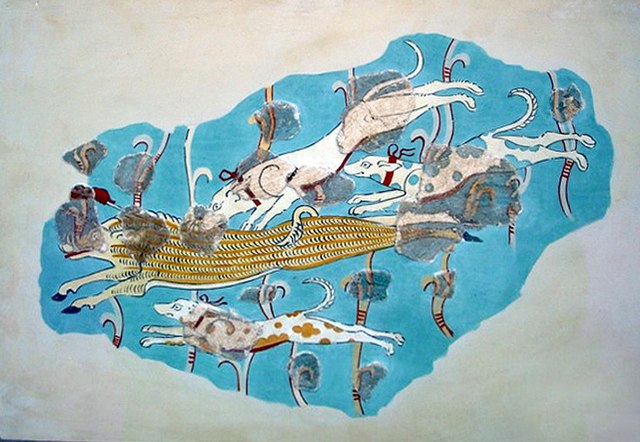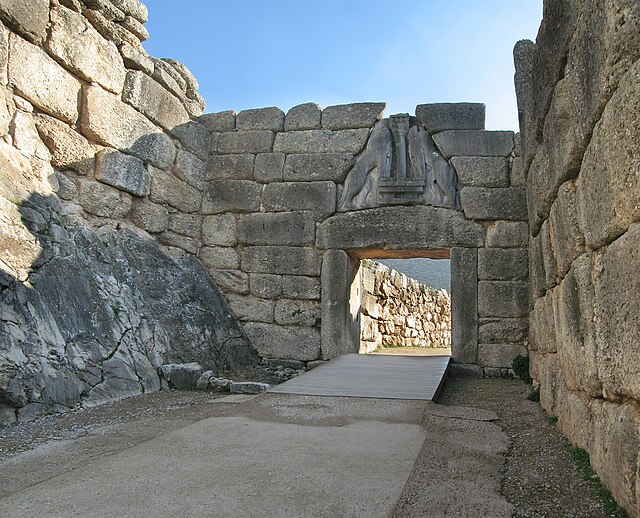Tiryns is a Mycenaean archaeological site in Argolis in the Peloponnese, and the location from which the mythical hero Heracles was said to have performed his Twelve Labours. It lies 20 km (12 mi) south of Mycenae.
General view of the Citadel of Tiryns, with Cyclopean masonry
Plan of Tiryns excavations.
Masonry tunnel
Fresco with a representation of a wild boar hunt. From the later Tiryns palace.
Mycenaean Greece was the last phase of the Bronze Age in ancient Greece, spanning the period from approximately 1750 to 1050 BC. It represents the first advanced and distinctively Greek civilization in mainland Greece with its palatial states, urban organization, works of art, and writing system. The Mycenaeans were mainland Greek peoples who were likely stimulated by their contact with insular Minoan Crete and other Mediterranean cultures to develop a more sophisticated sociopolitical culture of their own. The most prominent site was Mycenae, after which the culture of this era is named. Other centers of power that emerged included Pylos, Tiryns, and Midea in the Peloponnese, Orchomenos, Thebes, and Athens in Central Greece, and Iolcos in Thessaly. Mycenaean settlements also appeared in Epirus, Macedonia, on islands in the Aegean Sea, on the south-west coast of Asia Minor, and on Cyprus, while Mycenaean-influenced settlements appeared in the Levant and Italy.
The Lion Gate at Mycenae
Warrior wearing a boar's tusk helmet, from a Mycenaean chamber tomb in the Acropolis of Athens, 14th–13th century BC.
Death mask, known as the Mask of Agamemnon, Grave Circle A, Mycenae, 16th century BC, probably the most famous artifact of Mycenaean Greece.
Fresco depicting a female figure in the acropolis of Mycenae, 13th century BC








